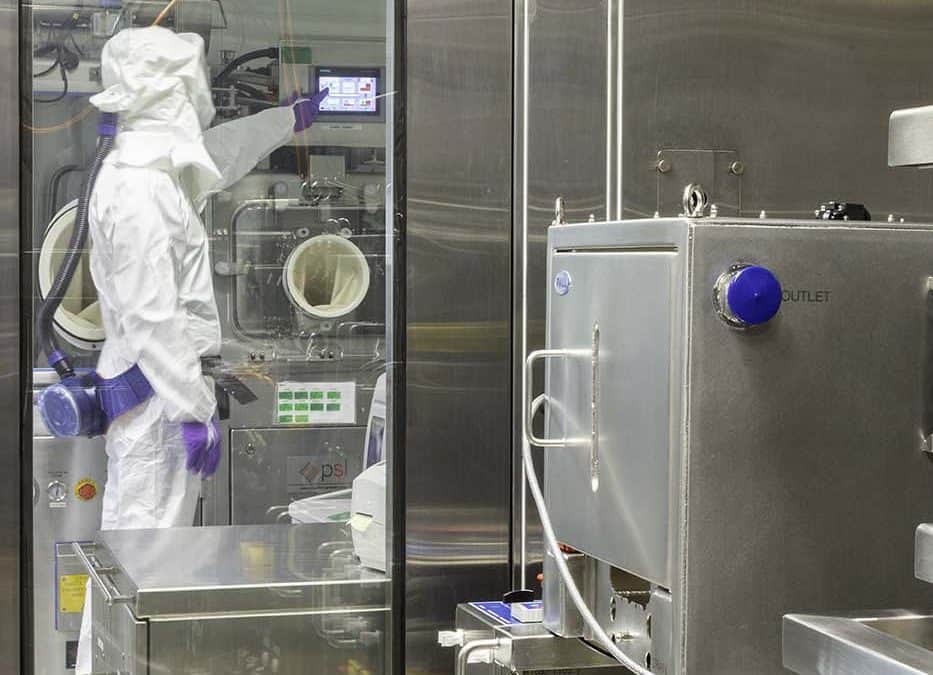Antibody-Drug Conjugates (ADC): From Concept to GMP Manufacturing
Antibody-drug conjugates (ADCs) represent a groundbreaking class of targeted therapies that combine the specificity of monoclonal antibodies with the potency of cytotoxic drugs. By delivering a powerful payload directly to antigen-expressing cells, ADCs maximize tumor cell killing while minimizing systemic toxicity. This targeted approach has revolutionized oncology treatment paradigms, with numerous ADCs now approved and many more in clinical development. In this article, we explore antibody-drug conjugates production, from selecting the ideal components to achieving ADC manufacturing GMP compliance, highlighting advanced bioconjugation for biologics.
👉 Looking for expert support in ADC development? Discover our ADC services.
Selecting the Right Components: Antibody, Linker, and Payload
The foundation of any ADC lies in three core elements:
- Antibody Scaffold: A high-affinity monoclonal antibody ensures selective binding to tumor-associated antigens. Humanized or fully human antibodies reduce immunogenicity and improve clinical tolerability.
- Linker Chemistry: Linkers bridge the antibody and cytotoxic payload. Cleavable linkers (e.g., acid-sensitive or protease-sensitive) release the drug inside target cells, while non-cleavable linkers enhance plasma stability. Linker choice directly impacts ADC manufacturing GMP processes, as stability and batch consistency are critical.
- Cytotoxic Payload: Potent molecules like auristatins or maytansinoids provide the therapeutic punch. Payload selection balances potency with tolerability, ensuring that even a low drug-to-antibody ratio (DAR) delivers sufficient anti-tumor activity.
By carefully evaluating each component, developers can tailor ADC design to their target indication and streamline downstream antibody-drug conjugates production.
👉 Related reading: Bioconjugation services for biologics
Bioconjugation Strategies for Robust ADC Production
Achieving a consistent DAR and minimizing aggregation are paramount. Two primary conjugation approaches prevail:
- Random Conjugation: Chemical methods (e.g., maleimide chemistry targeting cysteines) are straightforward but yield heterogenous DAR distributions.
- Site-Specific Conjugation: Enzymatic techniques (such as transglutaminase or engineered thiol sites) result in uniform ADCs with defined DARs, improving safety and efficacy.
Process parameters—pH, temperature, and reagent stoichiometry—must be tightly controlled to ensure reproducibility. Integrating inline monitoring (e.g., HIC-HPLC) during bioconjugation for biologics allows real-time DAR assessment, reducing batch failures and accelerating timelines.
💡 Explore more about our GMP manufacturing capabilites for ADCs.
Analytical Characterization and Quality Control
Thorough characterization underpins a robust ADC manufacturing GMP process. Key quality attributes include DAR distribution, aggregate levels, and residual free payload. Orthogonal assays provide complementary insights:
- HIC-HPLC quantifies DAR and detects high-molecular-weight species.
- Mass Spectrometry confirms payload attachment sites and molecular integrity.
- UV/Vis Spectroscopy offers rapid, in-process monitoring of conjugation progress.
Additionally, in vitro cytotoxicity assays verify that the final ADC retains desired potency, while stability studies predict shelf life under various storage conditions.
👉 See how we integrate GMP analytics in biologics manufacturing
Case Study: Streamlining ADC Production with Olon France
A mid-stage oncology biotech faced a critical hurdle when scaling their novel ADC from 10 L to 100 L bioreactors. The initial batches exhibited a broad DAR distribution (2.2 ± 0.5) and unacceptable aggregate levels (~8%), threatening both efficacy and manufacturability.
Challenge: Inconsistent DAR and high aggregation during scale-up led to batch failures and delayed their upcoming IND submission.
Solution:
- Site-Specific Conjugation: Olon France introduced a transglutaminase-mediated approach, attaching payloads at engineered glutamine sites. This shifted the DAR distribution to a narrow range of 2.8 ± 0.1, enhancing batch consistency.
- Inline Monitoring: By integrating HIC-HPLC sampling every 30 minutes, the team could fine-tune reaction time and reagent feed, preventing over-conjugation and aggregation.
- Optimized Purification: A tailored polishing train—comprising mixed-mode chromatography followed by mild HIC—removed aggregates, reducing levels from 8% to below 1.5%.
Outcome: Over multiple consecutive 100 L runs, the optimized process delivered ADCs with a tight DAR of 2.8 ± 0.1, aggregate content under 1.5%, and free-payload levels below 0.05%. These results not only met all ADC manufacturing GMP release criteria but also accelerated the client’s IND timeline by six weeks. The robustness of the method provided clear documentation for regulatory filings and instilled confidence in both investors and clinical partners.
👉 Interested in similar results? Contact our team to discuss your ADC project.
By combining strategic component selection, precise bioconjugation for biologics, rigorous analytics, and proven case-study success, developers can navigate the complexities of antibody-drug conjugates production. Olon France offers end-to-end ADC services—design, process development, and GMP manufacturing—so you can bring your next ADC candidate to clinic faster, safer, and more efficiently.



